All Nippon Airways (ANA) has redesigned its Boeing 777-300ER aircraft cabins

All Nippon Airways (ANA) has collaborated with highly regarded Japanese architect, Kengo Kuma, and leading British designers, Acumen to completely redesign the cabins of 12 of its Boeing 777-300ER aircraft.
As background, with the Tokyo 2020 Olympics less than 12 months away, these 777-300ER aircraft will serve Tokyo to London routes and act as the gateway for visitors coming to Japan to experience its culture and heritage. This five-year project has seen Acumen lead the redesign of ANA’s customer and brand experience, including the design of all the seating, galley entrance areas, social spaces and cabin interior design across all four cabin classes. ANA approached Acumen to bring a western perspective to the carrier’s design approach and customer experience, and the design team worked closely with Kengo Kuma to combine the best of Eastern and Western design traditions.
The Japanese ‘Omotenashi’ philosophy of hospitality has been considered throughout the aircraft, with the popular trend for hotel-like reception areas setting the tone for boarding passengers, a new food service area, and a redesigned self-service bar area with mini-fridges stocked with beverages and snacks.
First Class – “THE Suite”
While many airlines are quietly dropping first class in favour of business class suites, ANA’s 777-300ERs will offer both. Modestly named ‘THE Suite’, each of the eight first class seats, located at the front of the aircraft, represents the most spacious fully enclosed seating ever installed in an ANA plane. The trim and finish is subdued, echoing ANA’s lounge schemes with charcoal grey textiles and dark wood finishes, inspired by the understated décor of luxury Japanese hotels. For passengers travelling together, the centre doubles feature movable partitions which can be stowed upon request to create a large, shared suite.
Passengers in both first class and business class will be offered seat mattress and bedding designed in partnership with Japanese mattress specialist, Nishikawa. The unique product is tailor-made to the seat cushion for optimal seating and sleep comfort.
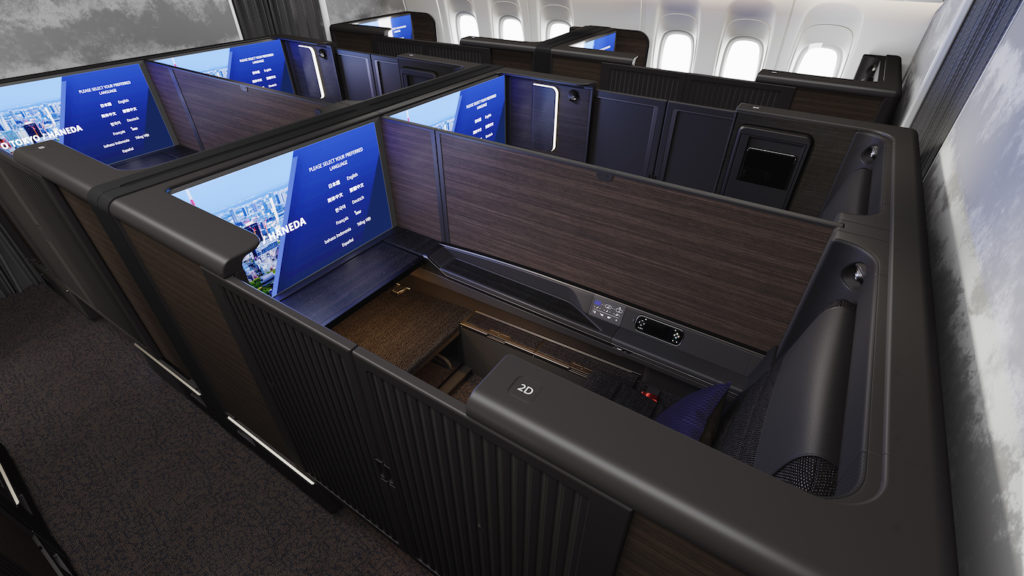
The central dividers in the first class suites can be lowered to create a shared space. The suites feature 43in IFE monitors, the world’s first 4K displays fitted in a commercial airliner, complemented by universal PC and USB ports – useful as passengers can use their personal mobile devices to control the programmes playing on the seat monitor, as well as using their devices as second screens for entertainment content. ANA has beaten Emirates to launch with 4K IFE displays, with the UAE carrier due to fly the technology on the 777X in 2020.
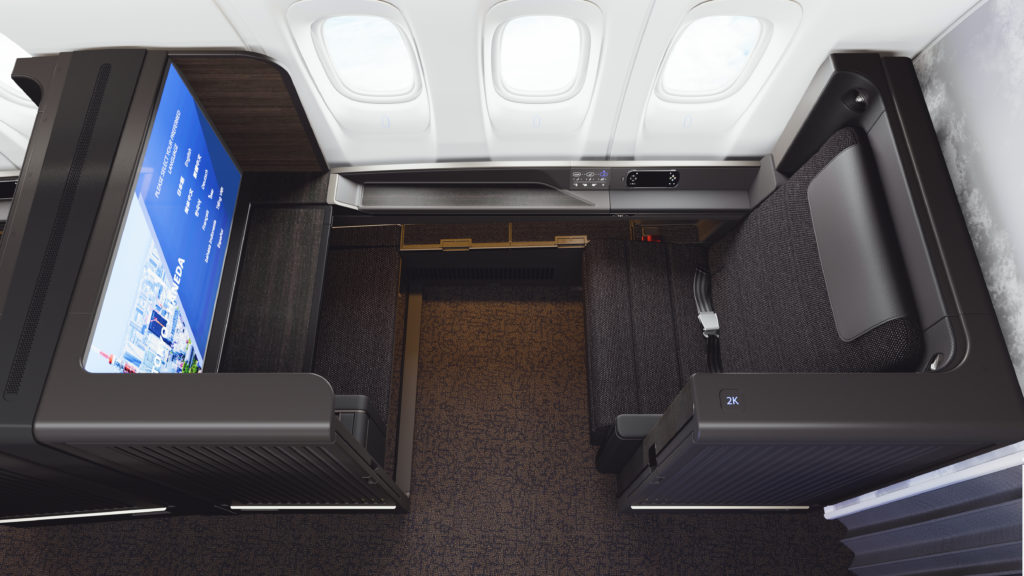
First class features a 43in 4K IFE display. Personal seat monitors in all classes are powered by ANA’s ‘My Sky Channel’ application to create a customisable entertainment experience. The Android and iOS app allows all customers to browse IFE content before the flight and create a favourites list that can be accessed through a paired seat monitor.
Business Class – “THE Room”
At the heart of ANA’s new product investment is a new business class seat design named ‘THE Room’. The 64-seat cabin is located aft of first class, and has a lighter appearance than first class, with the charcoal seat textiles complemented by rosewood, light Japanese ash and dark Japanese ash finishes, inspired by modern, multifunctional Japanese living spaces.
As architect Kengo Kuma stated, “The design process is just as much about what we decided to include as what we decided to omit. My work is about understanding how space is used and creating the most comfortable conditions in any environment. I enjoyed working with ANA and Acumen to combine the best of Eastern and Western design traditions and create a finished product that sets a global standard by embracing Japanese heritage and international outlook.”
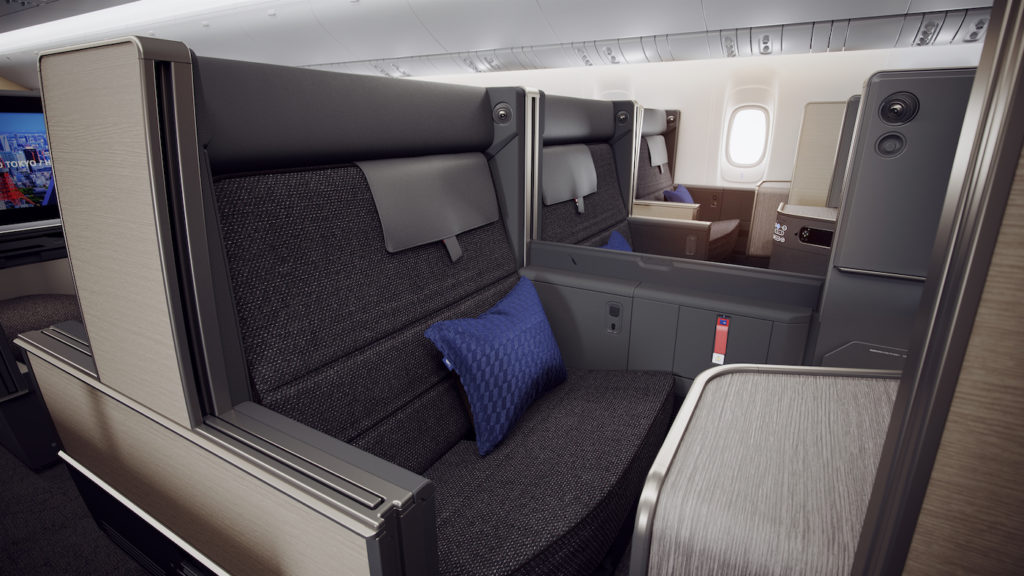
With a design focus on simplicity without clutter, the business class seat offers a ‘place for everything’, including discreet areas for personal belongings, with deep blue accent hues inside each in-seat stowage compartment. The vertical surface applications in both the first class and business class cabins were supplied by Tapis, with custom Ultraleather 9 Series on the feature leather panels, headrests and armrests in first class cabin, as well as the business class armrests, armrest cavities, headrests, seat backs and armrest faces.
The forward and rearward seat layout is familiar territory for Acumen, which designed the Business Class Studios for Etihad’s Boeing 787 and A380 fleet. According to ANA, THE Room is one of the largest business class seating environments in the world, with a sofa which is double the width of the airline’s previous business class seats.
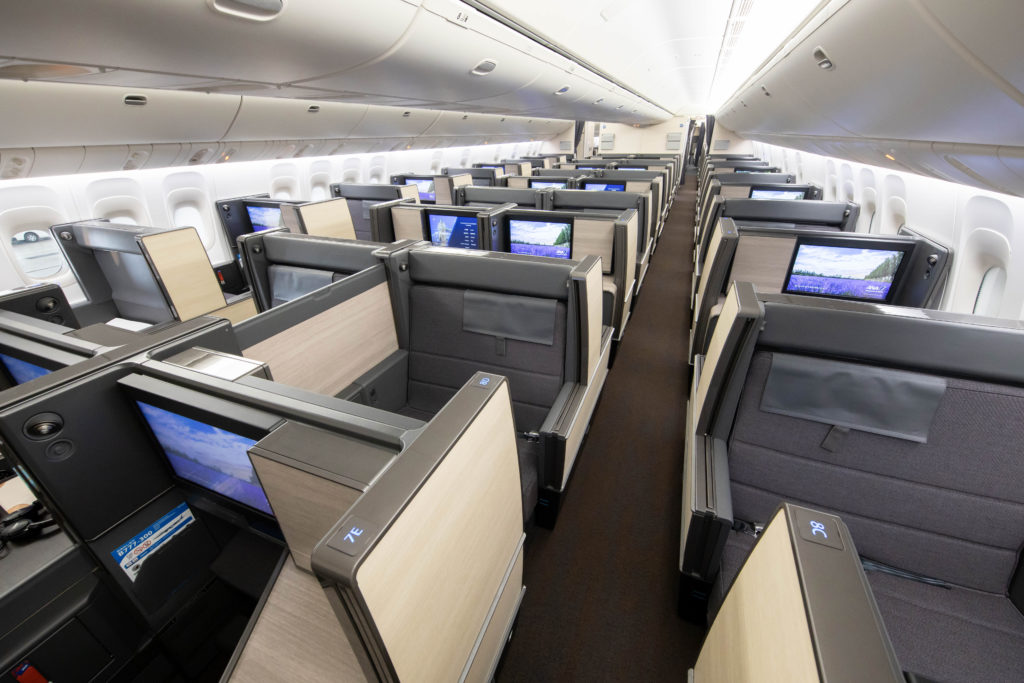
The first class and business class seats will feature new lights made by Panasonic, which have been custom-designed for ANA. Inspired by natural sunrises, the lights have been crafted to improve comfort and convenience, whether sleeping, reading or dining. Each suite also features flexible doors, which enable adjustable levels of personal privacy, whether enclosed for sleeping, or open for companions dining, socialising or meeting colleagues.

Business class also features 4K resolution IFE monitors, which are 24in units with adjustable lighting and viewing angles. ANA has upgraded its dining service, including new premium International cuisine tableware that will be showcased on flights starting this autumn
Premium economy and economy class
Kengo Kuma and Acumen were a little more playful in the trim and finish schemes for premium economy and economy, expressing the rich history of Japan with upholstery redesigned with Japanese patterns which tell a story throughout the inflight experience, known as ‘The Journey’. The team specified traditional prints including a tatami mat pattern which represents a Japanese welcome, and an arrow design taken from the Yagasuri pattern, to suggest movement and direction. These non-repeating patterns mean that each seat cover across both classes is unique.
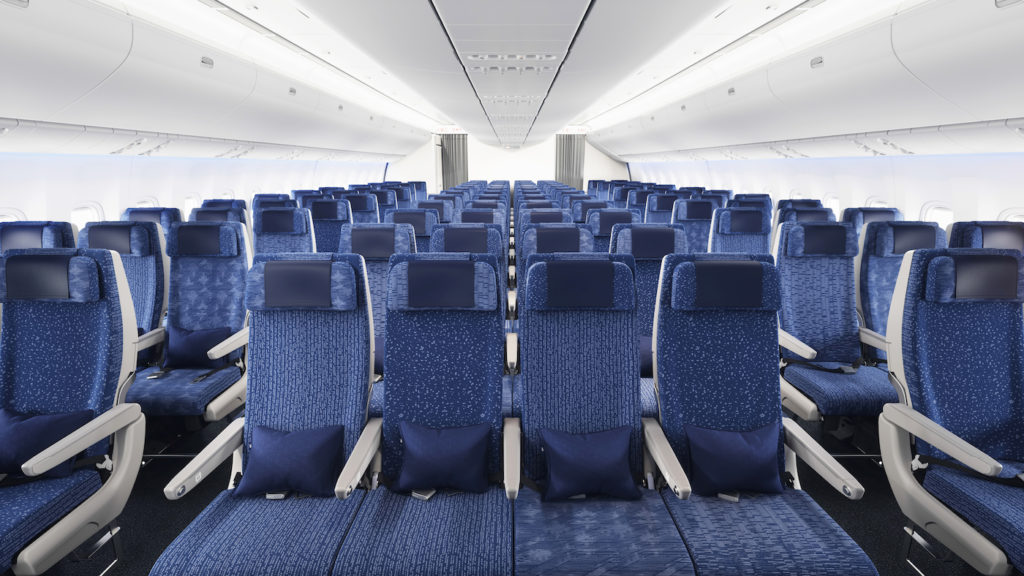
The non-repeating seat cover patterns in economy add visual interest to the 116-seat cabin. Passengers travelling in premium economy and economy class will also enjoy an enhanced inflight experience thanks to improved touchscreen monitors, and six-way adjustable headrests. These are the same upgrades recently installed on ANA’s Boeing 787-10 Dreamliner fleet.
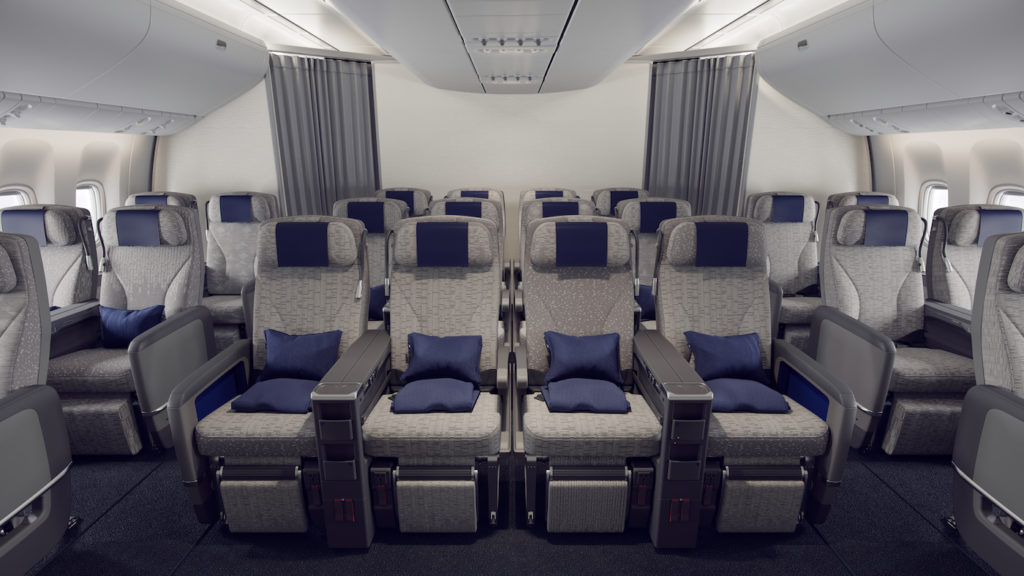
The non-repeating seat cover patterns are more subtle in the 24-seat premium economy cabin. “Our partnerships with Mr Kuma and Acumen illustrate that ANA has sought out the input of the most influential voices in the design community for these innovative new cabin designs,” said Hideki Kunugi, EVP of ANA. “In 2010, we were the first in Japan to introduce the full-flat seat with all aisle access, and in order for ANA to continue to lead and set the global standard for comfort and convenience, we knew that it would be necessary to integrate the latest insights from design professionals as we sought to redesign the flight experience and elevate every aspect of travel for our passengers.”
Flight test it
The first redesigned ANA B777-300ER aircraft will serve the Tokyo/Haneda-London route (NH211/NH212) from August 2. Daily operation of the redesigned aircraft will start from the end of August or beginning of September. Until then, the aircraft will be operated on even-numbered dates in August and odd-numbered dates in September.The schedules are subject to change.
